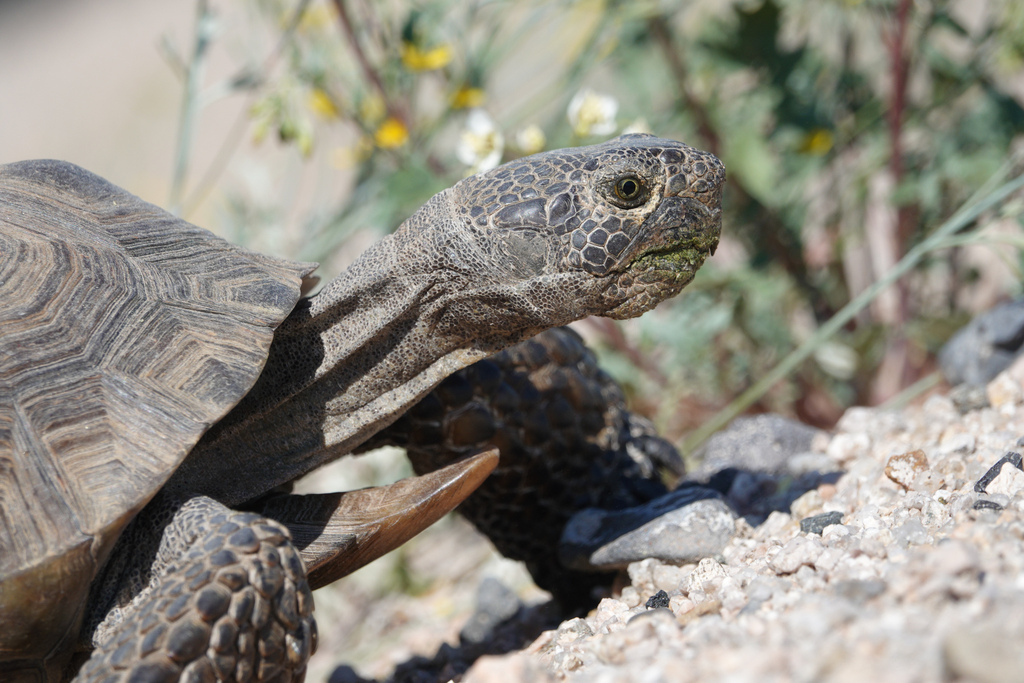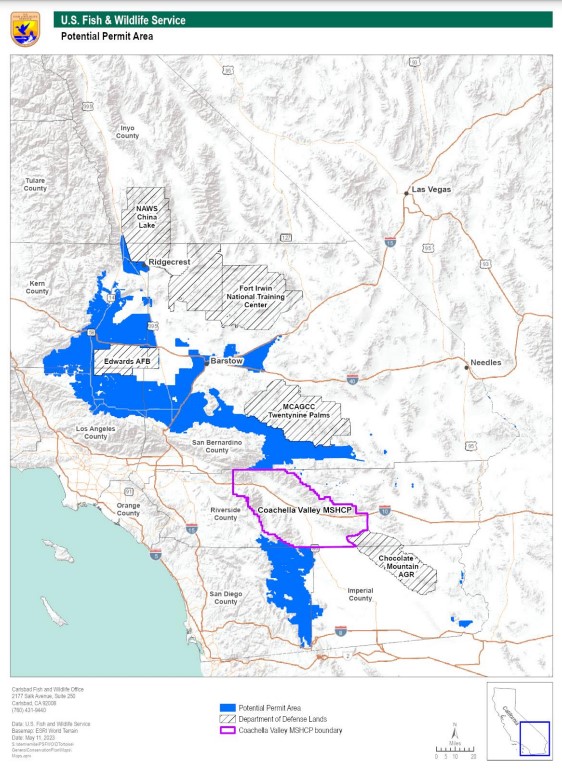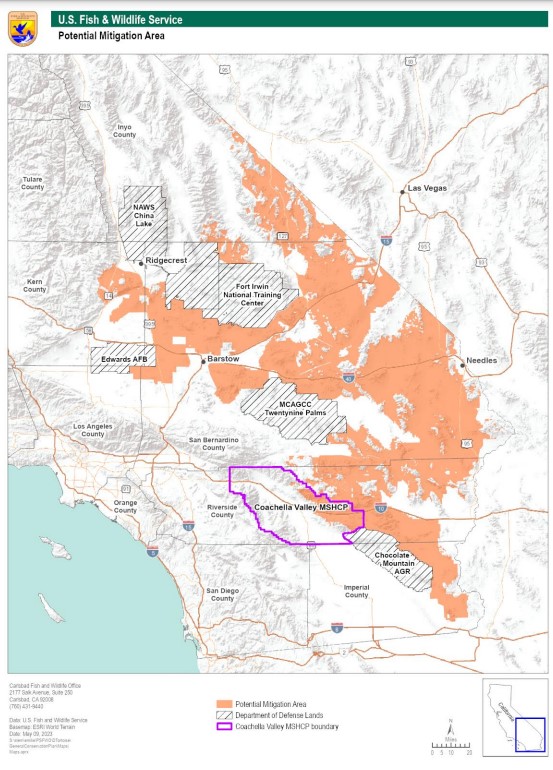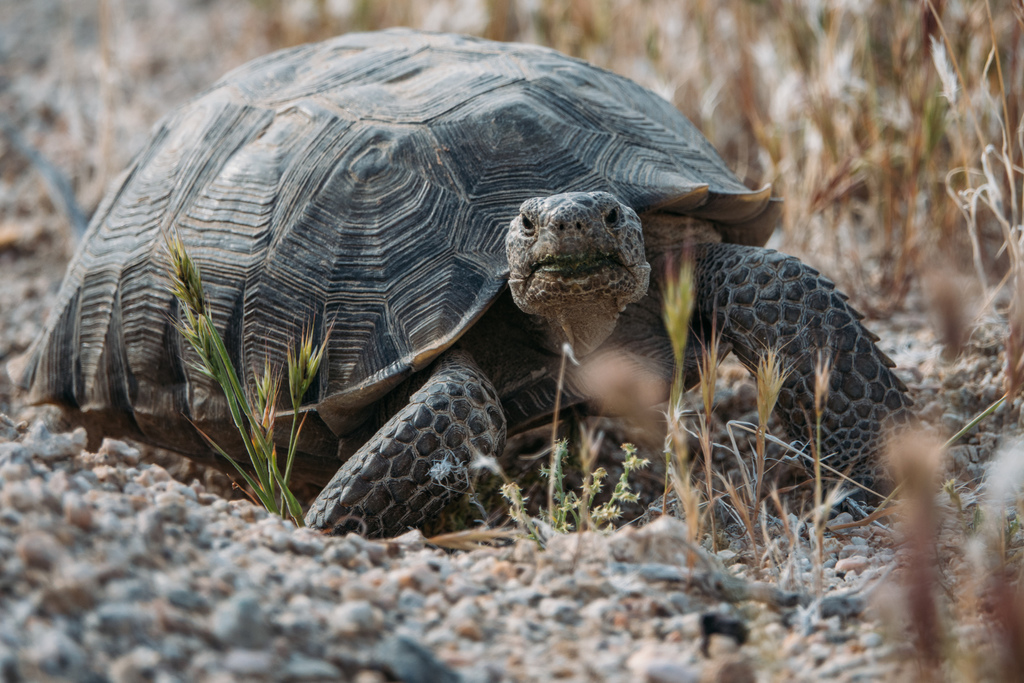Draft E.I.S. For The “General Conservation Plan For The Desert Tortoise In California” Has Been Issued By The U.S. Fish And Wildlife Service And Is Open For Public Comment

Overview
Who
This is proposed by the US Fish and Wildlife service, and will be developed in conjunction with the Bureau of Land Management (BLM) and the CA Department of Fish and Wildlife.
What
The U.S. Fish and Wildlife Service is proposing a new “General Conservation Plan” for the California desert tortoise which will help streamline the issuance of “incidental take” permits for permittees that are conducting a project (construction, road development, utilities, etc.) on non-federal lands.
What is an incidental take permit? When a species is listed as “endangered” there can be no “taking” of the animal (hunting, trapping, killing, moving), which can also extend to animals listed as “threatened” like the California desert tortoise. However, when a proposed project is likely to impact endangered/threatened species habitat, permittees need to apply for an “incidental take” permit which grants permittees the ability “take” (kill, harm, move, etc.) the species within the permitted project area so long as it does not “appreciably” affect the survival of the species.
Currently, when a permittee submits an application for an incidental take permit they must include their own conservation plan which defines how they will offset the negative impacts to the desert tortoise, all of which must go under public review in accordance with NEPA laws.
The goal of this new “General Conservation Plan” is to expedite this application process by providing permittees with a more specific set of guidelines for applicants of what needs to be included in the conservation plan. If the permittee decides to use the GCP and meet the guidelines then their application can be processed faster. The stated goal of these permits is to “protect desert tortoises and offset the impacts of projects ‘to the maximum extent practicable’ (see story by Ray Bransfield of the FWS). The new plan would set also threshold of 5 large tortoise deaths for a project, which if reached would require a re-assessment of the “GCP” and put a hold on all new permits.
There are 3 proposed actions in the new GCP:
- No action: The permitting process for desert tortoise incidental take permits would remain unchanged, which takes 12-24 months per applicant.
- Proposed action: Expedite the application process for incidental take permits, including a new set of standardized conservation strategies for permittees to use in their conservation plans for the desert tortoise. This plan encompasses an area of 15.2 million acres, of which 2.6 million acres would be an approved permit area to issue incidental take permits.
- Alternative action: This would include the streamlining efforts and standardized guidelines of the “Proposed action” above, but would reduce the size of the mitigation areas that could be used for desert tortoise conservation.
Where
This proposal specifically applies to the Mojave desert tortoise population in Southern California, and includes a general planning area for the new GCP, a permit area where applicants are allowed to apply for incidental take permits, and mitigation areas that define where desert tortoise mitigation efforts would take place as a result of any incidental take permits that are issued (see a map of the project area here)



Why
The proposal claims that the current application process for incidental take permits is too long (12-24 months) and does not effectively guide applicants on the best possible mitigation strategies for the desert tortoise. The “GCP” would expedite the permitting process by providing permittees with the option to follow the specific guidelines in the “General Conservation Plan,” which will speed up the process and help permittees follow the most up-to-date and consistent mitigation strategies in their conservation plans. The new “GCP’ would also free up administrative time for service staff so they can conduct more recovery work in the field for desert tortoises.
Status & Timeline
Current status
The Draft Environmental Impact Statement has been released to the public and is open for public comments until December 10, 2024.
Timeline
- July 16, 2023: Notice of Intent for E.I.S. release
- October 11, 2024: Draft E.I.S. released for public comment
- December 10, 2024: Public comments close
- 2025: Final E.I.S. expected
Impacts
Both positive and negative impacts are to be expected with the implementation of this plan:
- All development projects in the permit areas are almost guaranteed to result in the death of tortoises due to heavy equipment and machine use and destruction of habitat, although the plan intends to ensure that minimal deaths occur.
- Translocation of tortoises can impact their survival and migration patterns.
- Translocation can potentially increase the risk of spreading disease can result from translocation of tortoises.
- Permittees will have more specific guidelines that aim to minimize adverse effects during the implementation of projects and support broader tortoise conservation efforts.
- US FWS staff will have more time to conduct actual field recovery work for the tortoise.
How To Get Involved
NEPA (the National Environmental Policy Act) requires a public commenting period for projects occurring on federal lands. These comment periods are short-lived, but can have a dramatic influence on any proposed actions or plans. Do not forego this chance to influence the decisions on how to best utilize and protect our public lands and the animals, cultures and people within them.

Comment On This Project
You can influence the scope of this project and the future of the California Desert Tortoise by submitting a comment about the proposed plan.